Bharat Ratna Sir Mokshagundam Visvesvaraya (1860 – 1962): India’s Engineering Visionary
Contents
- 1 Bharat Ratna Sir Mokshagundam Visvesvaraya (1860 – 1962): India’s Engineering Visionary
- 1.1 Early Life and Education
- 1.2 Public Works and Sluice Gates
- 1.3 International Exposure
- 1.4 Dewan of Mysore and Beyond
- 1.5 Engineering Marvels
- 1.6 Retirement and Global Engagement
- 1.7 Contributions to Education and Industry
- 1.8 Tata Steel and Occupational Institute
- 1.9 Later Years and Achievements
- 1.10 Bharat Ratna and Later Years
- 1.11 A Peaceful Farewell
- 1.12 His Enduring Legacy
Sir Mokshagundam Visvesvaraya, a name etched in the annals of Indian history, was a luminary who left an indelible mark on the nation through his remarkable contributions to engineering, public service, and nation-building. Born in 1860 in the quaint town of Kolar, Karnataka, this visionary journeyed through life, making pivotal contributions at various stages, ultimately becoming one of India’s most celebrated engineers and statesmen.
Early Life and Education
Born in 1860 in Kolar District, Karnataka, Sir Visvesvaraya faced the untimely loss of his father at the tender age of 13. This setback, however, did not deter his determination to excel. At 20, he completed his Bachelor of Arts degree from Central College, Madras, a significant achievement for a young man of his time.
His quest for knowledge led him to pursue a two-year engineering course at Seien College, Pune, at the age of 22, setting the stage for a prolific career in engineering.
Public Works and Sluice Gates
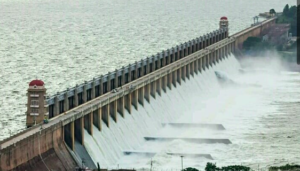 At the age of 23, Visvesvaraya joined the Bombay Public Works Department, where he began his journey as an engineer. It was during his tenure here that he made a groundbreaking contribution by inventing and patenting the innovative ‘sluice gates‘ for the Vidyasagar Dam when he was 41 years old. This invention revolutionized water management and irrigation systems in India.
At the age of 23, Visvesvaraya joined the Bombay Public Works Department, where he began his journey as an engineer. It was during his tenure here that he made a groundbreaking contribution by inventing and patenting the innovative ‘sluice gates‘ for the Vidyasagar Dam when he was 41 years old. This invention revolutionized water management and irrigation systems in India.
International Exposure
Between the ages of 40 and 42, Visvesvaraya embarked on a series of international trips, visiting Japan, Italy, the United Kingdom, the United States, Canada, Sweden, and Russia. These journeys exposed him to diverse engineering practices and ideas, enriching his knowledge and perspective.
Dewan of Mysore and Beyond
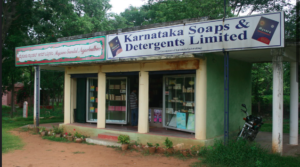 At 51, Visvesvaraya was appointed as the Dewan of Mysore, where he played a pivotal role in the state’s development. At 52, he founded the Bank of Mysore, setting the stage for modern banking in the region. His contributions expanded further with the establishment of the Mysore Engineering College, Mysore Printing Press, Mysore Soap, Sandal Oil, Mysore Metal & Tanneries, and involvement in various Civil and social Progress Associations.
At 51, Visvesvaraya was appointed as the Dewan of Mysore, where he played a pivotal role in the state’s development. At 52, he founded the Bank of Mysore, setting the stage for modern banking in the region. His contributions expanded further with the establishment of the Mysore Engineering College, Mysore Printing Press, Mysore Soap, Sandal Oil, Mysore Metal & Tanneries, and involvement in various Civil and social Progress Associations.
Engineering Marvels
Sir Mokshagundam Visvesvaraya’s legacy as an engineer continued to flourish. At 57, he was instrumental in the development of iron works, Batkal Harbour, and the harnessing of hydroelectric power in Bhadravati.
Retirement and Global Engagement
After retiring as the Dewan of Mysore at 58, Visvesvaraya embarked on another round of international travel to Japan, Canada, the USA, and the UK. During this period, he authored a book titled “Reconstructing India,” reflecting his deep insights into the nation’s progress.
Contributions to Education and Industry
Throughout his life, Sir Mokshagundam Visvesvaraya championed education and industry. He obtained a Doctor of Science degree from Calcutta University at 60 and devised a scheme to supply drinking water to Bangalore, including the creation of the iconic Brindavan Gardens.
At 65, he toured Europe and America to study industrial practices and subsequently played a crucial role in the manufacturing of iron and steel in India.
Tata Steel and Occupational Institute
At 66, Visvesvaraya became a Director on the Tata Iron & Steel Board, contributing to India’s industrial development. He was 68 when he established the Sri Jayachamarajendra Occupational Institute in Bangalore, emphasizing vocational training and skill development.
Later Years and Achievements
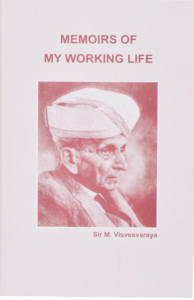
Throughout his later years, Sir Visvesvaraya continued to make significant contributions to India. At 71, he published “Unemployment in India: Its Causes & Cure,” addressing a pressing issue of his time.
In his 80s, he received various honorary doctorate degrees, including a D.Litt from Benaras University, and authored “National Building: A Five-Year Plan for the Provinces.”
At 81, he played a pivotal role in the formation of the Premier Automobile Company. Two years later, his book “Prosperity Through Industry” was published.
At 90, he penned “Memories of My Working Life,” sharing his remarkable journey. At 92, he received another D.Litt, this time from Andhra University. This blog is based on the facts that I gathered from there. The book is out of print, though I have a copy of it, gifted by my loving husband.
Bharat Ratna and Later Years
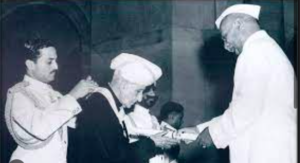
The pinnacle of recognition came at 94 when Visvesvaraya was conferred with the prestigious Bharat Ratna, India’s highest civilian award. Even in his late years, he continued to excel academically, earning a D.Sc from Jadavpur University at 97.
At the awe-inspiring age of 100, he joined his own Centenary Celebrations, a testament to his longevity and vitality.
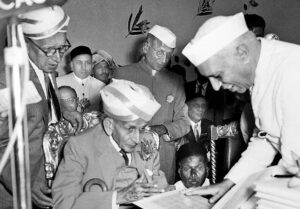
Centenary Celebrations of Sir MV
A Peaceful Farewell
Sir Mokshagundam Visvesvaraya passed away peacefully in Bangalore at the age of 101, leaving behind an unparalleled legacy of engineering excellence, public service, and nation-building.
His Enduring Legacy
Sir Mokshagundam Visvesvaraya’s life journey exemplifies the limitless potential of human endeavor and the power of education and innovation. His contributions continue to inspire generations of engineers, administrators, and leaders, underscoring the significance of visionary thinking and tireless dedication in shaping a nation’s destiny. His legacy serves as a beacon of hope and aspiration, reminding us that with determination, knowledge, and ingenuity, we can overcome obstacles and engineer a brighter future for all.
![]()
Comprehensive.. Thanks